The first cold war Soviet SPAAG
The ZSU-57-2 was the first Soviet Anti-aircraft self-propelled artillery to come out after the short-lived and ill-fated ZSU-37. The denomination stands for stands for "Zenitnaya Samokhodnaya Ustanovka" ("anti-aircraft self-propelled mount") followed by '57', the caliber in millimeters, and '2' the number of gun barrels. It was the first mass-produced SPAAG in the Soviet Union and the first of a long lineage complementary to the future SAM carriers. It was long into Soviet service (nicknamed "Sparka" or "pair"), until the early 1970s due to its crude targeting system, but soldiered for much longer under other banners worldwide. In all, it was also declined into 13 versions and sold to 29 countries and fought in at least 12 major conflicts, a list that will be perhaps completed as the vehicle is still operated by 16 countries today.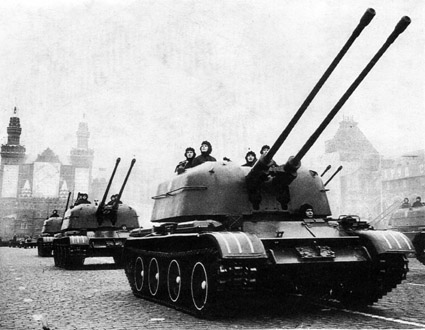
Soviet SPAAGs lineage from ww2
From the WW2 ZSU-37 SPAAGs, it appeared that both the speed, range and accuracy of the guns were no longer a match for the upcoming generation of jets fighters as it was not already for the latest piston-engine fighter-bombers. The idea of using a light tank chassis was not either a good choice as it appeared to have poor maneuverability in difficult terrain and slow off-road speed when loaded by the weight of the mount. The very short career of the ZSU-37 which was written off in the 1950s already showed the way for improvements. The only available SPAAG in the meantime was the BTR-152A, which featured the quad 14.5mm KPV heavy machine guns ZTPU-4, or the ZPTU-2. Both were no more than the Soviet equivalent of the American M13-M14 Maxson quad. They had no sufficient protections for the operators, and of course no NBC protection whatsoever.Development of the ZSU-76-2
Back in February 1946 already, Works No. 174 Design Bureau in Omsk joined forces with the Research Institute No. 58 in Kaliningrad (Moscow Oblast) with a T-34 conversion with a quad 37 mm AA guns. The design was submitted to the Technical Council of the Ministry of Transport, which prefered to base a design on the latest chassis available, the T-54. Therefore the Research Institute No. 58 Design Bureau under the supervision of V.G. Grabin started the development of a twin 57 mm automatic AA gun based on the tracked 57mm S-60, in the spring of 1947. The first S-68 prototype was ready in 1948, was given S-79A four-wheel carriage but did not enter production.
The S-60-57mm which inspired the twin S68 mount. It was found that six towed batteries of this type coupled with a PUAZO-6 AA director and the SON-9 FC radar were more efficient than a battery of 4 vehicles, despite their superior firepower.
But this led to the ZSU-57-2 (Ob'yekt 500), fitted with a twin S-68 mount, and based on a reworked T-54 chassis. Following was the first prototype in June 1950, and second in December 1950, which all passed successful tests in January-March 1951. This included a crash course 500 km long and firing 2,000 rounds on targets. To get rid of teething problems and make more tests, six additional prototypes were delivered. Modifications included an increased ammunition load, but the improved driving systems for the S-68 were still not ready yet and delays ensured, with the final service tests occurring in December 1954. The ZSU-57-2 entered service eventually on 14 February 1955.
Design
Basically, the Soviet SPAAG uses a shortened T-54 chassis with four twin road wheels per side instead of five and a thinner armor. The second major characteristic was that the twin 57 mm S-68 was mounted in a large, open-top and fully revolving turret. The compartmentation was classical, with the driver on the front, fighting compartment in the middle and engine compartment and transmission at the rear. This design also reused a maximum of parts from the T-54 in order to be kept cheap to produce, and maintain. To go more in details, the driver's position was on the left-hand side, but moved forward and further to the left compared to the T-54. He was given a single-piece hatch cover, opening left, two periscopic vision devices alternative to one TVN-1 infrared vision sight and infrared headlamp. Also in his compartment were stored parts and the fire-fighting equipment signal panel. Other differences included a G-74 direct current generator, 6-MST-140/STEN-140M accumulator batteries, automatic anti-aircraft sight of the plotter type with two collimators, and a 10RT-26E portable radio transceiver (right-hand side turret interior) and TPU-4-47 intercom. Both were changed for newer models along production. For self-defence, the crew was also given AK-47 assault rifles and a 26 mm signaling pistol.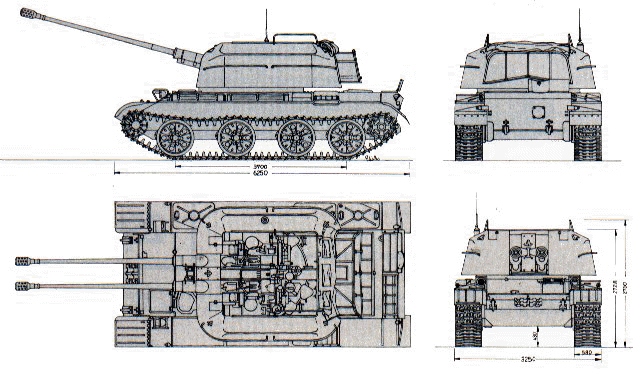
"Sparka" Blueprint
Mobility
The V-54, 4-stroke, airless (mechanical)-injection, water-cooled 38.88 liter V12 diesel engine gave 520 hp (388 kW) at 2,000 rpm and it was mounted transversely to save space as in the T-54. The shorter chassis compensated for the turret weight, but overall the vehicle was 28.1 tonnes versus 36 for the T-54. Armour savings also added to the difference, as the vehicle was protected by 8-15 mm of armor, whereas the T-54 was protected by 120 mm of sloped armor at the front. This gave the vehicle an 18.5 hp/tonne (13.81 kW/tonne) ratio versus 14.6 hp/tonne for the T-54 and a top speed of 50 km/h (31 mph) on flat versus 48 kph for the T-54. It was also agiler, accelerated much faster, can carry more fuel (inside the hull 640l, external the right fender each 95l). The drivetrain was the same except for the lack of a twin rubber-tired road wheels pair, each was given a torsion bar system, and hydraulic rotary shock absorber on the first and last unit. Front idlers, rear drive sprockets, no return rollers, large 90 links tracks which gave a ground pressure of 0.63 kg/cm2.Protection
A meager gain, tempered by a greater range (420 km) and the limitations of the original drivetrain. But this was fast, enough to shepherd the Armoured Units en route at full speed from strafing attacks. Of course, the lack of armor was a liability in urban combat, which came later, and the vehicle was an easy prey for RPGs. The open-top turret prevented also a good servant protection both from snipers and shrapnel, not to mention the absence of any form of NBC protection. Details of the armor were as follows: 13.5 mm upper front (60°), 15 mm lower front, hull sides 13.5-15 mm, rear 8-10.6 mm, roof 15 mm, bottom 13.5 mm, turret sides 13.5 mm, mantlet 15 mm.Armament
The trademark of this model was its boxy, roomy open-top turret, with rounded sides only 8 mm thick, resting on a ball-bearing race ring 1850 mm in diameter. When not in use, guns in the travel lock position, the turret can receive a tarpaulin with 16 plexiglass windows. The turret upper front had two small ports with armored covers for the sights collimator. For the guns to operate, the target's speed & direction (visual estimation) and range (sight and rangefinder) was entered into the sighting system by the sight adjuster located left-rear. To fire, there were two loaders, left and right, that opened the breeches, and loaded the 4-rounds clips into the magazines manually and their travel seats had to e stowed in clamps on the turret sides each time. The gunner located left hand side, middle, was to lay the gun and open fire with an electric trigger (both guns) or each one individually via foot pedals. This was operated via an electro-hydraulic drive, with a manual mechanical backup. The twin S68 barrel and mount weighted as much as 4,500 kg. They had a recoil of about 325-370 mm. Their base model, the 57 mm S-60 AA autocannons were very much a Bofors-type with a longer barrel and larger bore. Each barrel is air-cooled gun barrel, 4365 mm long, and fitted with a muzzle brake. Traverse took 0.2°-36° per second and elevation −5° and +85° at 0.3-20° per second, propelled by a direct current electric motor and universal hydraulic speed gears with a mechanical manual backup. The maximal rate of fire was 210–240 fragmentation and armour-piercing tracer (AP-T) shells per minute, and practical rate was about 100-140 rpm at 1,000 m/s.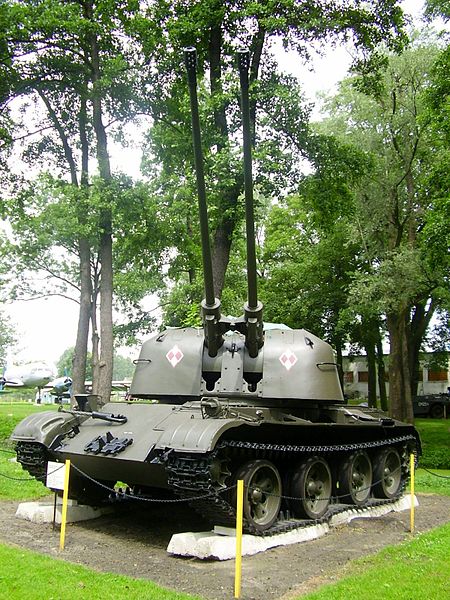
Polish ZSU-57-2, guns at maximal elevation
Each 2.8 kg projectile (with the warhead and nitrocellulose powder charge) could reach 12,000 m in maximal elevation and range, although the effective range was 4 km (2.5 miles). Specifics of the HE-frag rounds used against flying targets meant their effective range was about 6.5 to 7 km. Against ground targets, BR-281 AP rounds were used. They can defeat 110 mm armour at 500 m or 70 mm armour at 2,000 m which was lethal against all light armoured vehicles and could be against the soft spots of some medium tanks. 300 rounds were carried, some stored in loaded clips in the turret, hull front, and the remainder are stored unclipped under the turret's floor. Empty cases were extracted and conducted via a conveyor belt to a wire metal basket in the back of the turret. A single HE-Frag shell was considered lethal against any aircraft of the time according to the Air Defence Research Institute No. 2, and this SPAAG was seen by most experts as the most powerful in existence at that stage, especially compared to its NATO rival, the M42 Duster.
Variants
Soviet variants: ZSU-57-2 modernised twin S-68A autocannon, officially entered service with the Soviet Army in 1955. Many ZSU-57-2 were converted into bulldozers after being removed from AA units at the beginning of the 1970s by army workshops. A steel closed superstructure replaced the turret and a BTS-55 bulldozer blade was added at the front. -Cubans ZSU-57-2 had hanging flaps added to its track guards. -Egyptian ZSU-57-2 were modernized and given a radar -Finnish ItPsv SU-57 were given a machine gun mounted on the front of the turret. -East German FAB 500U (Fahrausbildungspanzer) were converted driver training vehicles. -North Korean versions were based on Type 59 chassis with many elements from the Chinese Type 80. -Bosnian Serbs models converted to SPGs with overhead protection and ammunition crate welded on the glacis plate. Chinese Type 80 The reference Chinese SPAAG which had the same turret as the ZSU-57-2, but wit the Type 59 twin anti-aircraft autocannon copy, and a chassis of Type 69-II MBT. It's a heavier beast altogether, which will be scrutinized later in a standalone post.Exports
Algeria (45, 1974), Angola (40, 1975), Cambodia, China (Type 80), Cuba (25, 1963), Egypt (100, 1960), Eritrea, Ethiopia (10, 1977), Hungary (24, 1967), Indonesia, North Korea (250 turrets ordered 1968-77 mated on local models), Mozambique (20, 1982), Somalia, Sudan, Syria (255, 1966), Vietnam (500, probably offered free), Finland (12, 1960, now retired), East Germany (129, replaced 1967, converted FAB 500U), Iran (100, 1966), Iraq (100+ Type 80s), Poland (129), Romania (60, 1965), Slovenia (12, 1991), Yugoslavia (100, 1963). The ZSU-57-2 was also tested Czechoslovakia and some captured ones used by the Croats and Israeli.The ZSU-57-2 in action
The list of conflicts where this SPAAG, either organically attached to armoured units or detached for specific operations is the following so far: Vietnam War (1959–75), Six-Day War (1967), 1973 Yom Kippur War, Angolan Civil War (1975–2002), Sino-Vietnamese War (1979), Iran–Iraq War (1980–1988), Lebanon War (1982), First Persian Gulf War (1990–91), Yugoslav wars (1991–2001), which includes the Ten-Day War, Croatian War of Independence, Bosnian War, and Kosovo War, but also the Second Persian Gulf War (2003), following Invasion of Iraq and continuation war, and 2011 Syrian Civil War. In Vietnam, these were used massively (as much as 500 ZSU-57-2s survived the war, now about 200 would be still in service) by the Vietnam People's Army (VPA), first seen in the 1972 Easter Offensive (attached to the 201st and 202nd tank regiments), and later the Ho Chi Minh Campaign in 1975. Although they were used against US aircrafts it proved more effective against ground targets. Captured ones were allegedly used also by the South Vietnam Army for some time.In the Middle East, the records of this SPAAGs are quite impressive, spanning decades, and starting with the 1967 Six Day War, 1973 Yom Kippour and continuation wars, operated by Egypt and Syria. Egyptian ones defended El-Arish airstrip but many were destroyed of captured on june, 6, 1967 by M48 Patton tanks of the 7th Armored Brigade. Captured ZSU-57-2 by the Israeli were used only until the end of the war.
Others operated by the Syrians served in the 1982 Lebanon War, trying to shot down Israeli aircrafts over the Beqaa Valley. They were found again more useful against ground targets. In the Iran-Iraq war, these were operated by both camps as well as their copies Chinese Type 80s. They were found more successful when deployed together with ZSU-23-4s or 9K31 Strela-1 which passed on target informations through their on-board radar against Iranian AH-1J SeaCobra attack helicopters. Some of these shoot down two British Tornado in the First Persian Gulf War, over the Shaibah air base and severely damaged three others. They were seen again in action in the 2003 Invasion of Iraq.
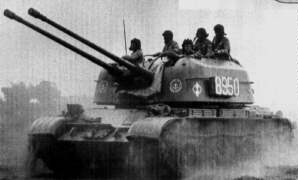
Polish ZSU-57-2
In Syria, only 10 of these SPAAGs took part in the Spring of 2014 offensive and the fights at Harasta, Rif Dimashq Governorate probably limited to ground support only. In Yugoslavia, these were used as light batteries by Serbs and Montenegrins of the JNA, again, against ground targets. The Croatian forces captured two of these, and these were extensively used by the Serbs during 1999 NATO air raids (no less than 54 deployed). The Bosnian Serbs mounted improvised roof protections on theirs. The ZSU-57-2 had some shortcoming through. Some were pretty obvious at the start, like the open-top turret. This was not a problem then as NATO's rare SPAAGs were also all open-top. But from the 1970s new fully enclosed models appeared, that were also given modern FCS, radars, and allowed a full NBC protection. The second limitation of the model was its late adoption. At that stage, aviation technology and performance accelerated twin fold, and in terms of rpm and traverse speed only, this generation of SPAAGs was already obsolete and de facto in all subsequent operations frequently used to deal with ground target, or slow-moving helicopters and light aircrafts.
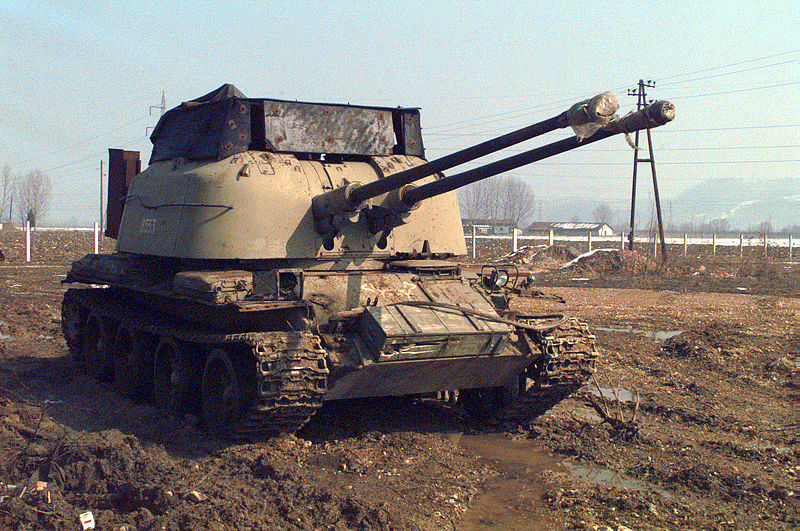
Serbian ZSU-57-2
Works No. 174 started a modernization programme started in 1957 but soon abandoned due to the development of more promising radar-guided SPAAGs with lower-bore cannons but much faster rate of fire. The absence of mechanical computing and reliance on visual sights made it only practical by day, accurate when idle (not on the move) and against relatively slow, low-flying objects. Probably its biggest limitation was its slow traverse, woefully inadequate against low-flying jets at full throttle. But when these big cannons hit their mark either by chance or marksmanship the result was almost certain. Just like the US SPAAGs of the first generation they were gradually found more useful in support of the infantry when raw firepower was needed on the spot.
Sources
The ZSU-57-2 on WikipediaThe ZSU-57-2 on Miliary Factory
Walkaround video of the ZSU-57-2
The ZSU-57-2 on Wikipedia
ZSU-57-2 specifications | |
| Dimensions (L-w-h) | 6.22 (8.46 oa) x 3.27 x 2.71 m () |
| Total weight, battle ready | 28.1 Tons |
| Crew | 6 (driver, cdr, gunner, sight adjusters, 2 loaders) |
| Propulsion | V-54 wc 38.88 l V12 diesel 520 hp (388 kW) |
| Speed (land/water) | 50/30 km/h (31 mph) |
| Range (road/off road) | 420/320 km (on/off road) |
| Armament | 2 x 57mm S68 autocannons |
| Armor | 6-15 mm (0.25-0.55 in) |
| Total production | 2020+ |
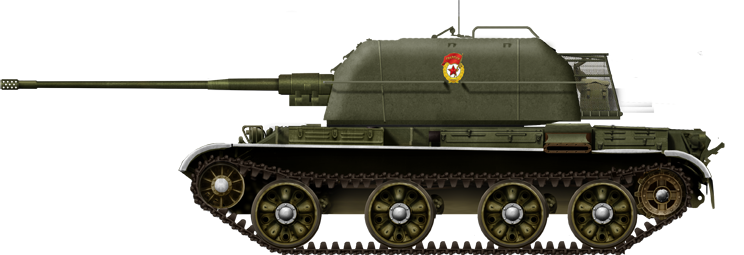
Zenitnaya Samokhodnaya Ustanovka 57-2 in red square may parade colours and markings, 1960s
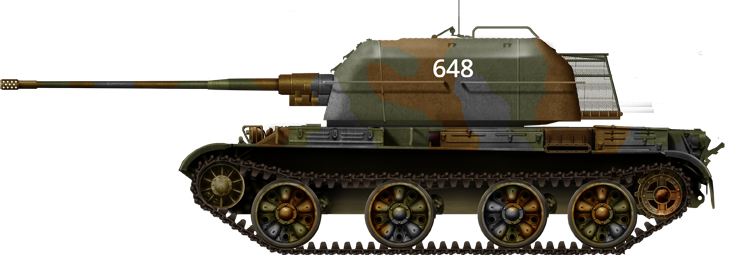
Camouflaged ZSU-57-2, 1970s. The turret rear basket was not intended to be used as storage, and was usually left empty to collect spent rounds.
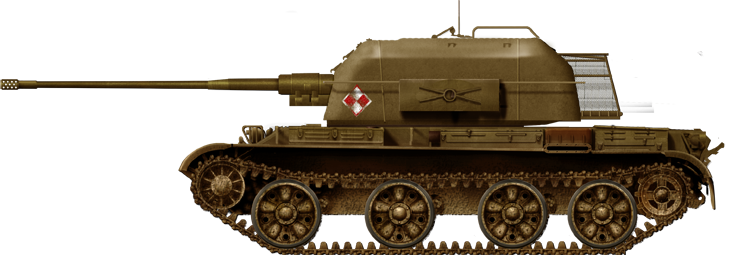
Polish ZSU-57-2, 1960s
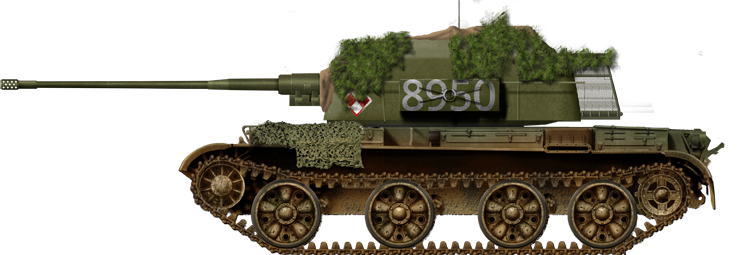
Another Polish ZSU-57-2, late 1970s
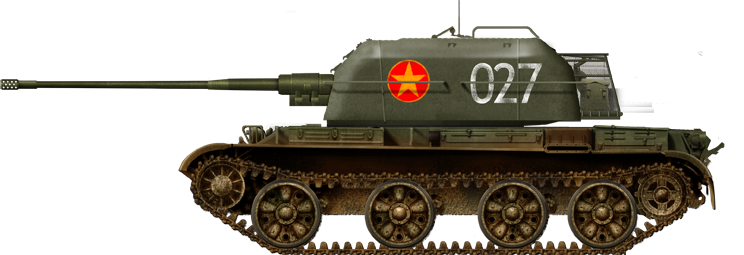
North Vietnamese ZSU-57-2. About 500 were deployed, and it was quickly discovered like the Duster, that it was just as effective in providing fire support for infantry attacks.
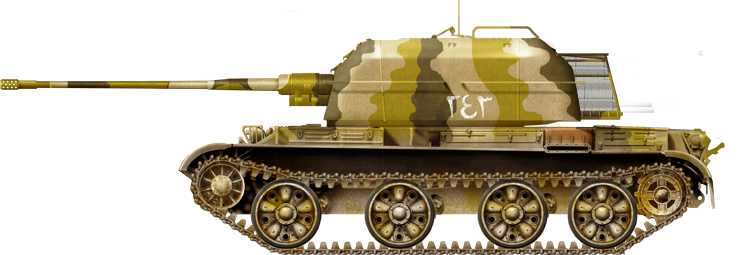
Syrian ZSU-57-2 in 1973
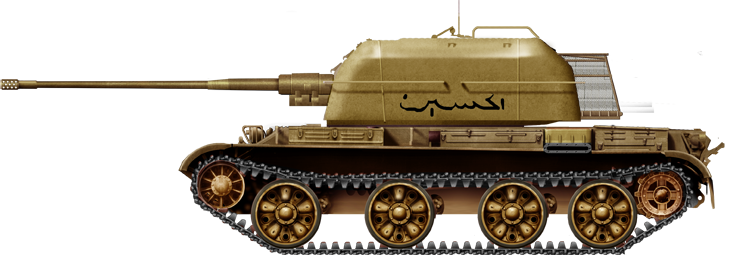
Egyptian ZSU-57-2 in 1973, Naqayeb, Debabh Air Defence Company.
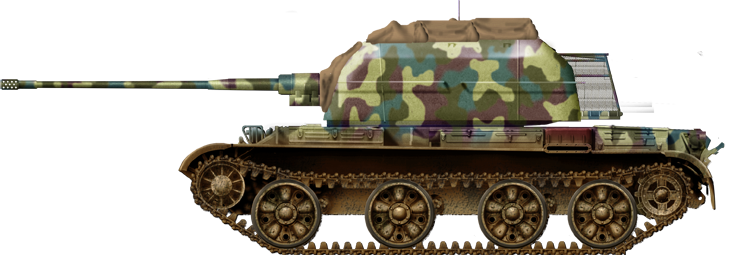
Croatian ZSU-57-2, now preserved

Serbian ZSU-57-2 in the 1990s. These were modified with extra storage acting as armour and fitted with a hard top made of armour plates.
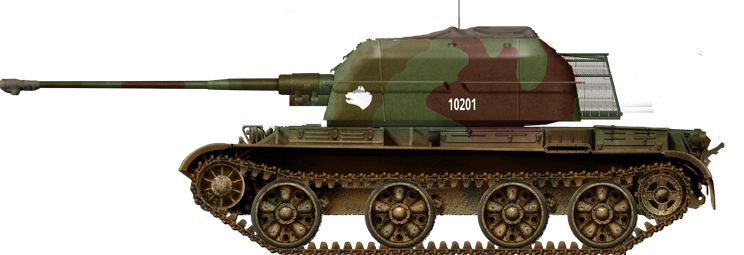
Slovenian ZSU-57-2
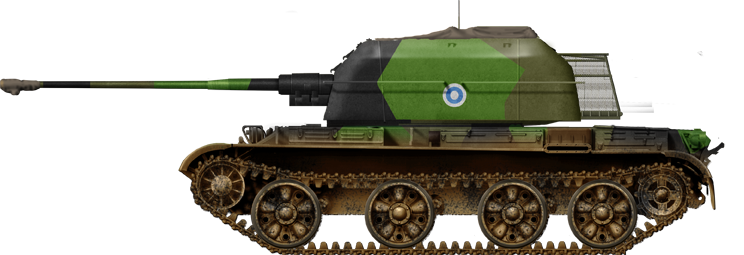
Finnish ItPsv SU-57. Some were given an additional front machine gun.
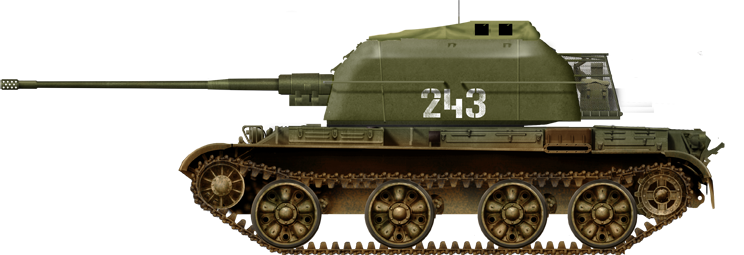
Soviet ZSU-57-2 with a canvas above the turret
Gallery
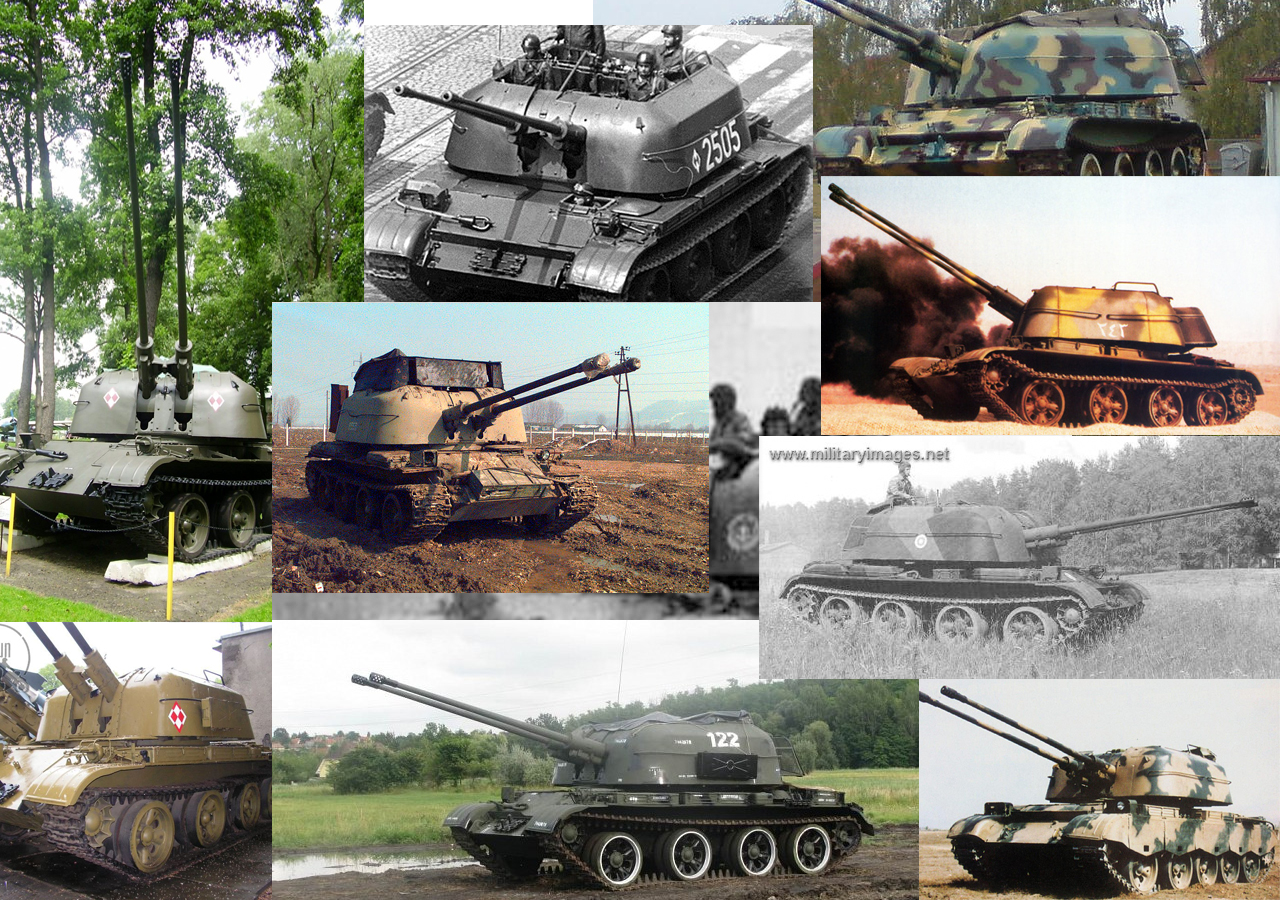
Some references round from internet used for these profiles
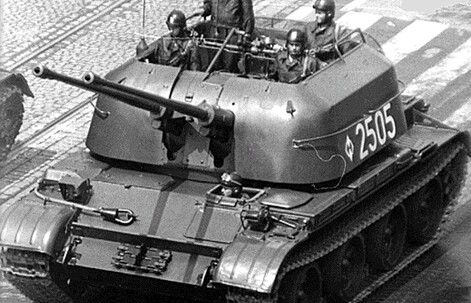
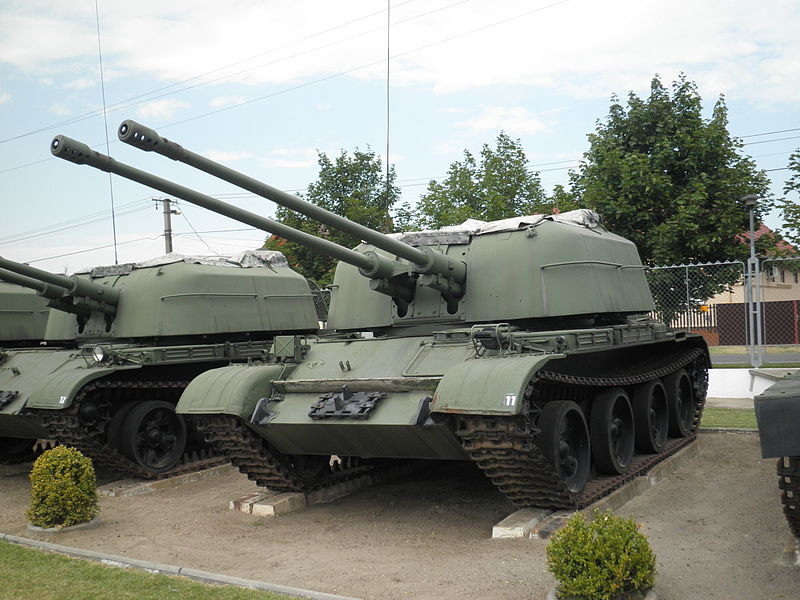
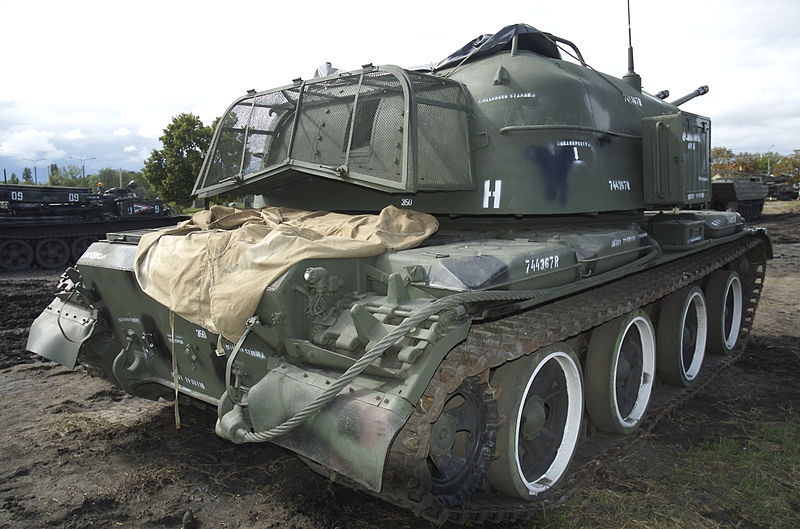
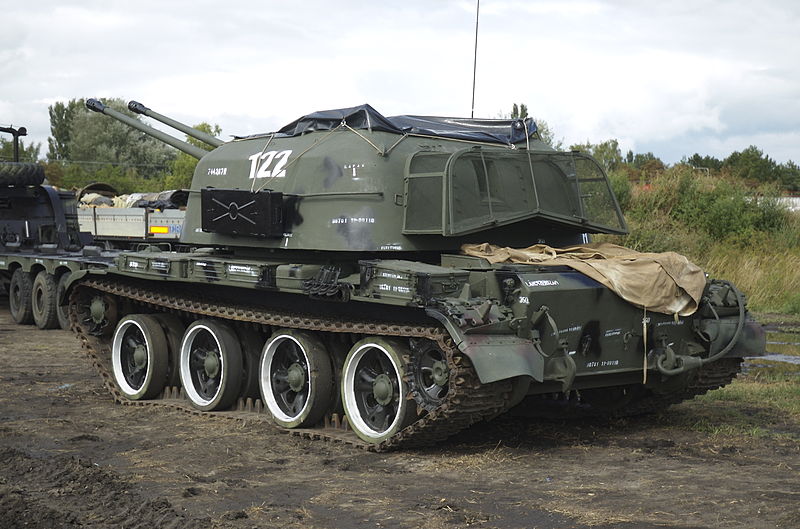
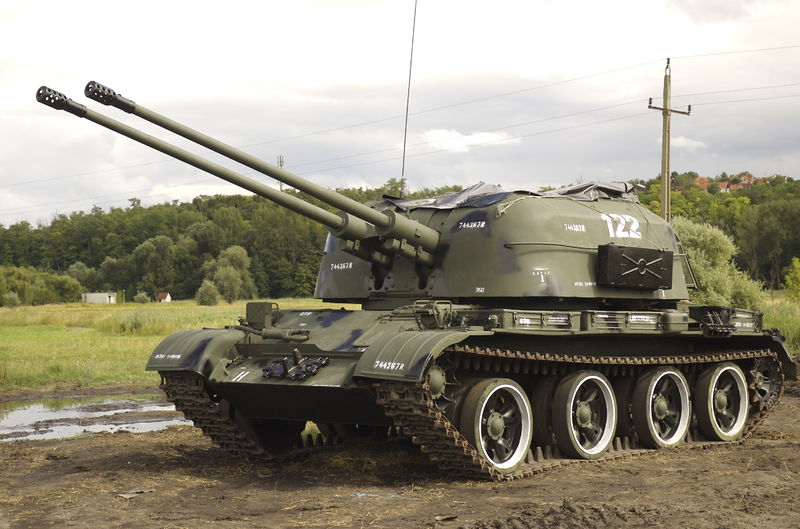
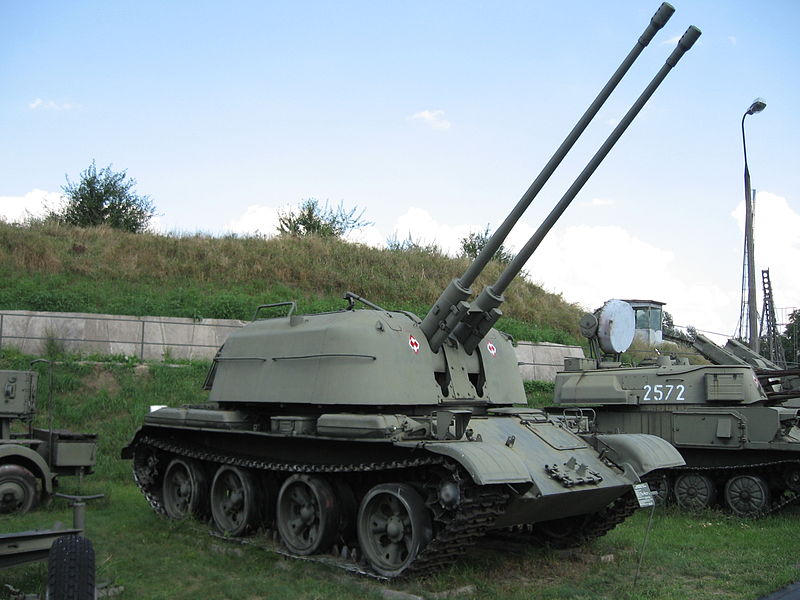
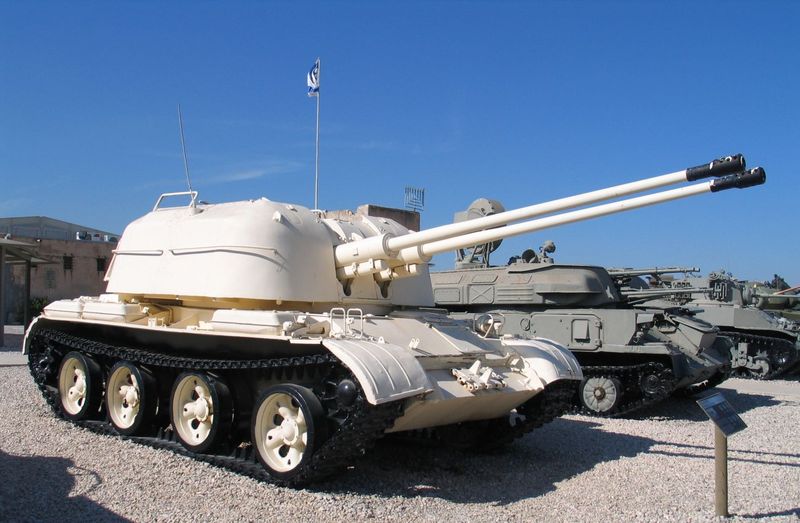
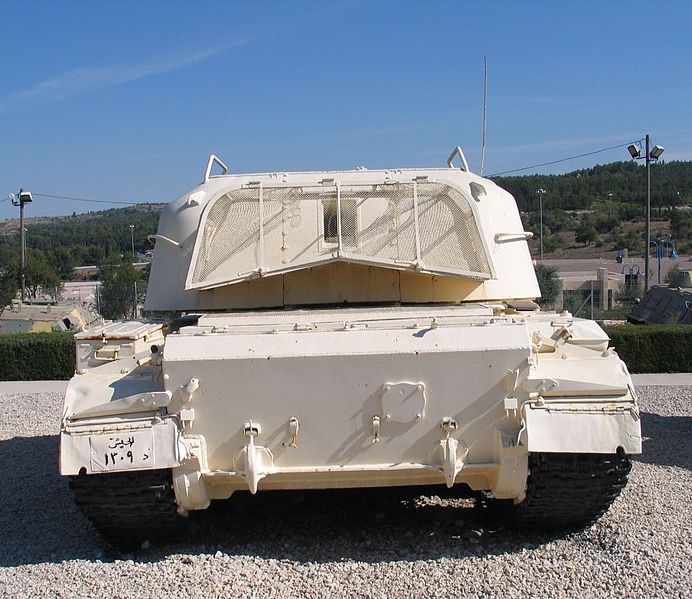
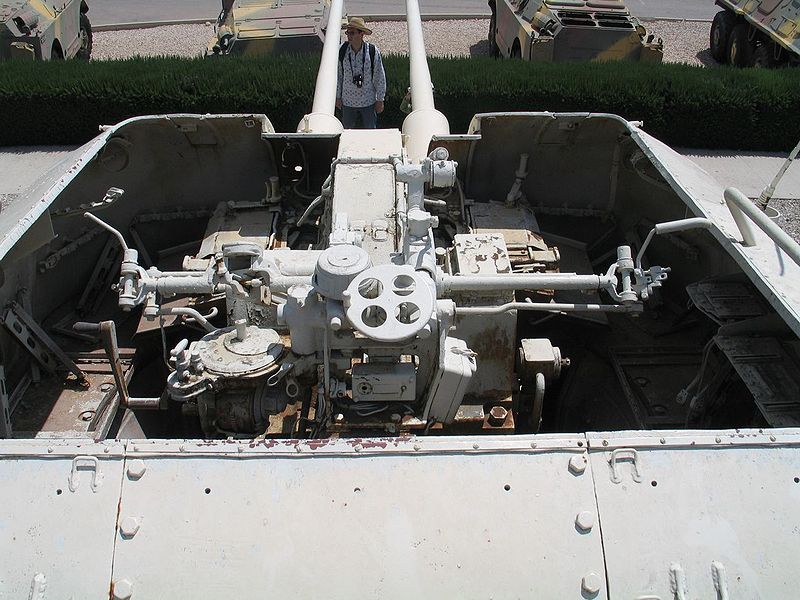
Short US Documentary part about the 57-2

Cold War Tanks


































Cold war tanks posters

Cold War Main Battle Tanks

Cold War Soviet Army

